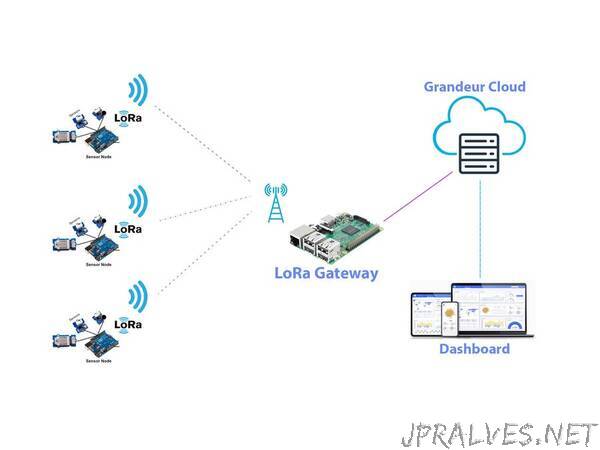
“A solar-powered environmental monitoring system based on the Reyax LoRa module and Grandeur IoT Cloud platform for a smart city.
Smart City & Air Quality
The World Bank defines a smart city as one that is a technology-intensive city. This means highly efficient public services.
One of the fundamental features of smart cities is providing a sustainable environment. For a sustainable environment, it is necessary to monitor the environmental conditions for identifying the sources of pollution and mitigate them. In this context, thousands of air quality sensors are placed to provide real-time information to the government and citizens alike. This data can be turned into useful information, allowing us to make better decisions – whether to do with transport planning or knowing what route is best to walk to work.
Air quality sensing fits well with the vision of the smart city – providing information about a city that was not previously available, allowing people to make decisions that can improve the quality of their lives.
Problem & Solution
The increased level of air pollution in big cities has become a major concern because of the risk it represents to human health. In this context, technology has become a very useful tool in contamination monitoring and the possible mitigation of its impact. Particularly, there are different proposals using the internet of things (IoT) paradigm that uses interconnected sensors in order to measure different pollutants. A network of low-cost air quality monitoring sensor nodes can be deployed to monitor air quality and meteorological parameters. Hence, through pollution source detection, the city can take corrective measures and improve its environmental health. By installing disaster detection systems like floods and rainfall monitoring solutions in your surrounding. the citizens can be alerted beforehand in case of a catastrophic event. A holistic view is derivable, enabling the authorities to make data-driven infrastructure and policy planning decisions.
The Project Plan
In this project, we are going to monitor a few most important environmental parameters like noise, temperature, humidity, and air quality. It transmits real-time data through wireless communication protocol to a cloud platform. The equipment fully runs on solar power with a battery backup. The data from the device is accessible on a dashboard that visualizes and analyzes the data in the desired formats.
For smart city air quality monitoring, you have to place sensor nodes in different locations. In terms of power consumption and cost, it is not a good idea to connect every sensor node individually to the cloud. Rather it is a good idea to collect data from all the sensor nodes of a small area and publish all the data to the cloud from a single gateway. LoRa can give us this advantage and that’s why I have chosen LoRa for my project.”
